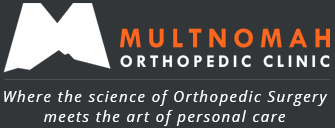Bunion

A bunion is a bony protuberance that appears on the external surface of the big toe when it angles toward the adjacent toe. It is an extra bone and a fluid-filled sac that grows at the base of the big toe.
Causes of bunions:
Bunions are common in women and tend to run in families (heredity). The major cause of bunions is prolonged wearing of ill-fitting shoes like tight, narrow, and high-heeled shoes which compress the toes and exerts excessive pressure while walking. The condition gets worsen and more painful as the bump grows bigger in size. Certain conditions such as rheumatoid arthritis and gout may also cause bunions.
Symptoms:
- Swelling
- Pain and tenderness around the big toe
- Turning of big toe towards the adjacent toe
- Change in the shape of the foot
- A bony mass at the joint surface of the big toe
- Pain and discomfort while walking
- Restricted movements of big toe
Diagnosis:
Your orthopaedic surgeon diagnoses a bunion based on the following:
- Medical history to rule out any diabetic conditions, hypertension, circulatory disorders
- Physical examination to evaluate the nature of bunion
- Foot or ankle X-rays to determine the bone and soft tissue damage
Treatment:
A bunion may be treated either by non-surgical or surgical methods.
The non-surgical treatment options include:
- Medications to help alleviate pain and associated symptoms
- Antibiotics to avoid infection
- Ice packs to reduce inflammation
- Get adequate rest
- Wear broad-toed shoes that fit properly to reduce the compression of the toes
- Use of bunion pads, cushions and splints to protect and alleviate painful foot bunions
- Select properly fitted shoes that match the shape of your feet
Surgery:
The surgical method of removal or excision of a bunion is known as bunionectomy. The goal of bunion surgery is to relieve pain and restore the normal position and function of the big toe.
Some of the surgical complications include infection, blood clot formation, recurrence of the bunion, damage to nerves, bleeding, and unrelieved pain.
Prognosis:
Always try to take care of the bunion at the initial stage by wearing accommodative shoes. In very few cases, post-surgical complications may interrupt the healing of the bunion. If left untreated it may cause bursitis, gait abnormalities, arthritis and other serious health problems.
Prevention:
Avoid wearing poorly fitted shoes to prevent irritation and compression of the toes which may lead to the growth of a bunion.

![]() Minimally Invasive Bunion Correction
Minimally Invasive Bunion Correction
You will need the Adobe Reader to view and print the above documents. ![]()










